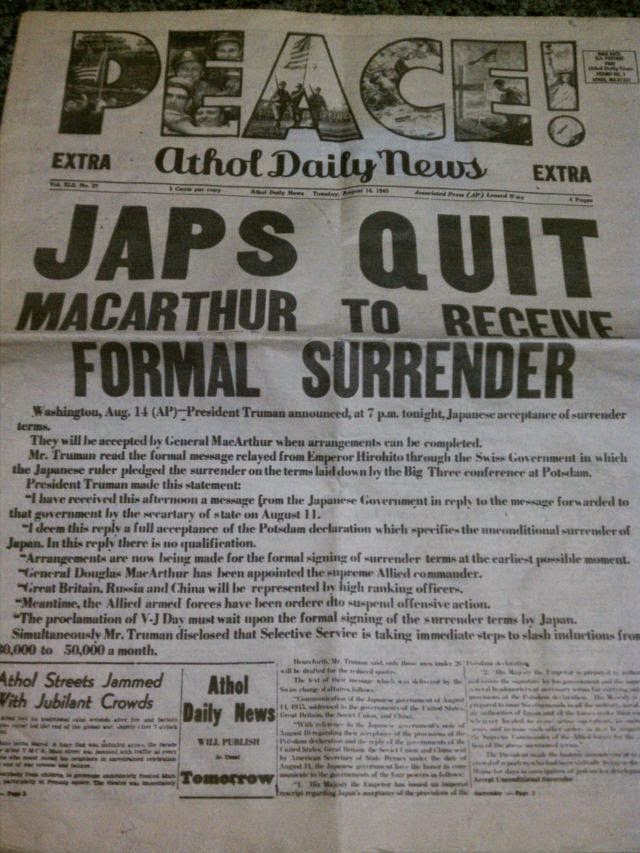 |
| The actual surrender took place on 14 August 1945. All that was left was the formal ceremony - and occupation |
Japan surrendered shortly after the atomic bombings of Hiroshima and Nagasaki. It was also shortly after the Soviet declaration of war on 9 August and its immediate invasion of Manchuria and the Kurile Islands, in mid-August 1945.
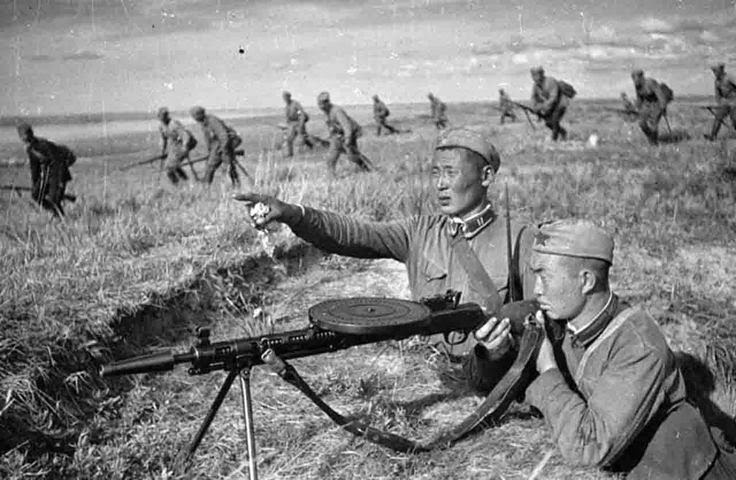 |
| Two Mongolian Red Army gunners with a Degtaryov DP-27 cover an infantry attack against the Japanese |
How much effect each had on the decision is debatable and somewhat a matter of national pride for the nations concerned. The argument is sterile because Japan as a military power was finished one way or the other as a result of any possible combination of those events - and even without them, to be truthful. The official ceremonial documents were not signed until 2 September 1945.
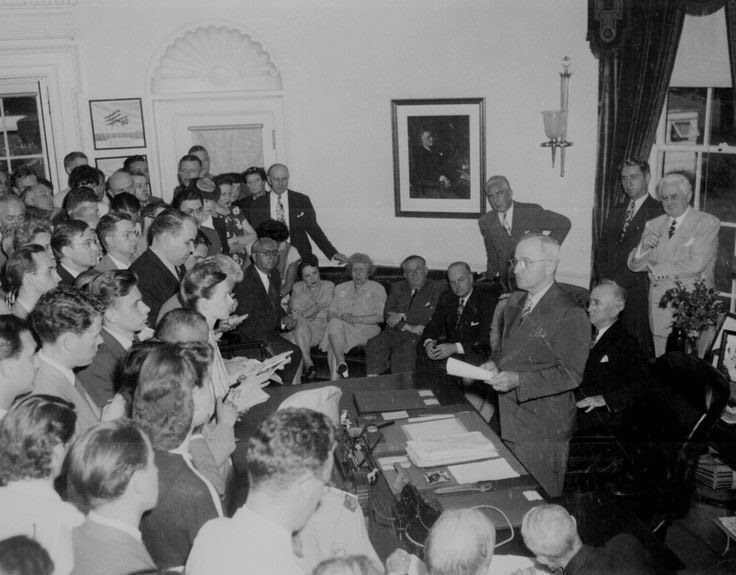 |
| Harry Truman announcing Japan's surrender at the White House, Washington, DC, 14 Aug 1945. |
The importance of the actual signing should not be discounted. The Korean War, for instance, had an Armistice Agreement, but no actual peace treaty. That formulation hasn't worked out so well in the long run.
So, the Japanese surrender ceremony actually was a big deal - a very big deal - and the Americans made sure to make it into quite a show. Unlike the surrender of Germany to the Western Allies, which was handled in a Reims schoolroom, this one was done in the light of day, with planes flying over, everybody dressed to the nines - a real Hollywood production.
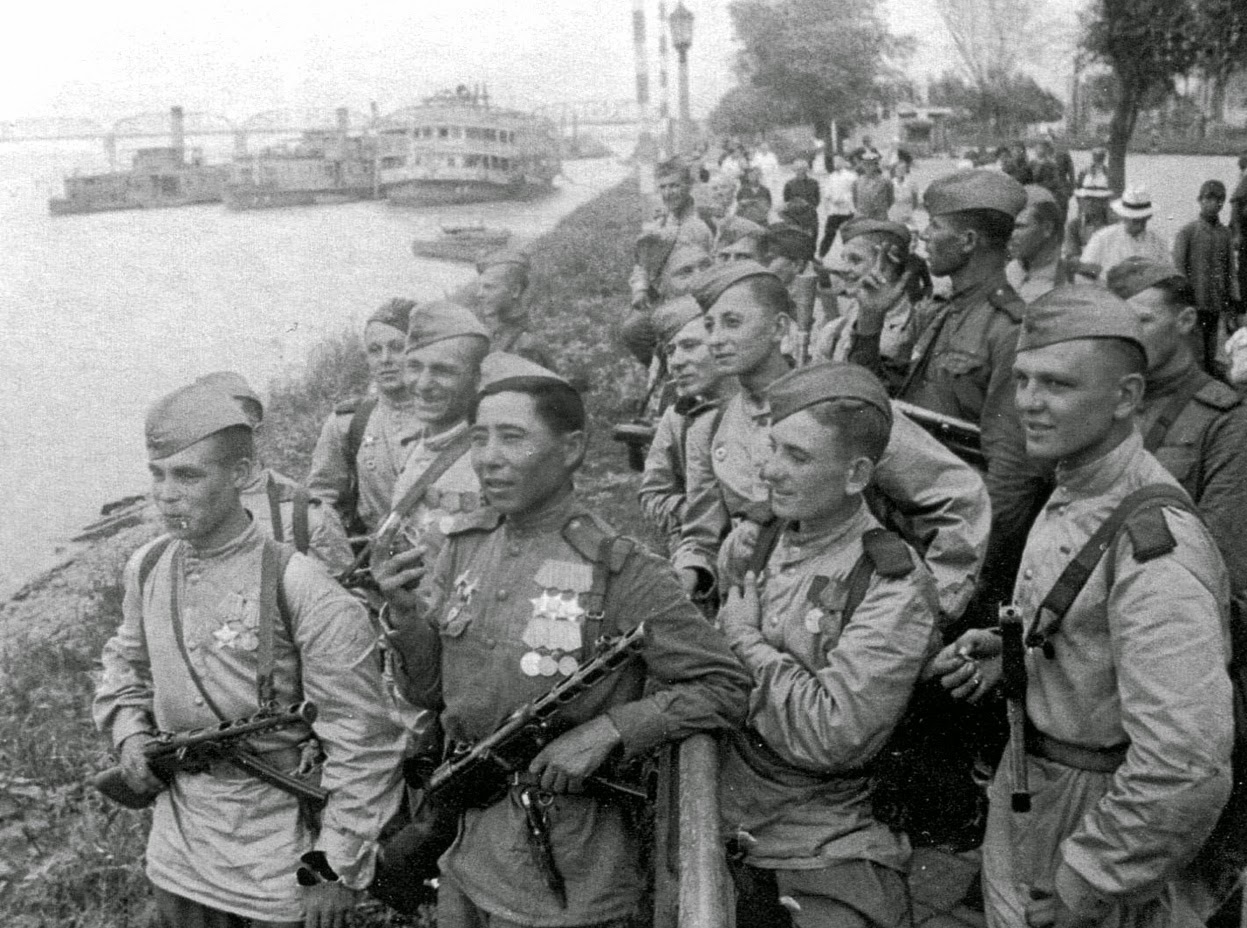 |
| “Soviet soldiers on the bank of the Songhua River in Harbin. The Japanese-occupied city was liberated by Soviet troops on August 20, 1945. Some 700,000 Soviet troops occupied Manchuria by the time Japan surrendered.” |
Nothing wrong with that at all. It was the least they could do to commemorate the end of such a vicious war that took so many lives. Nobody puts on such spectacles better than Americans.
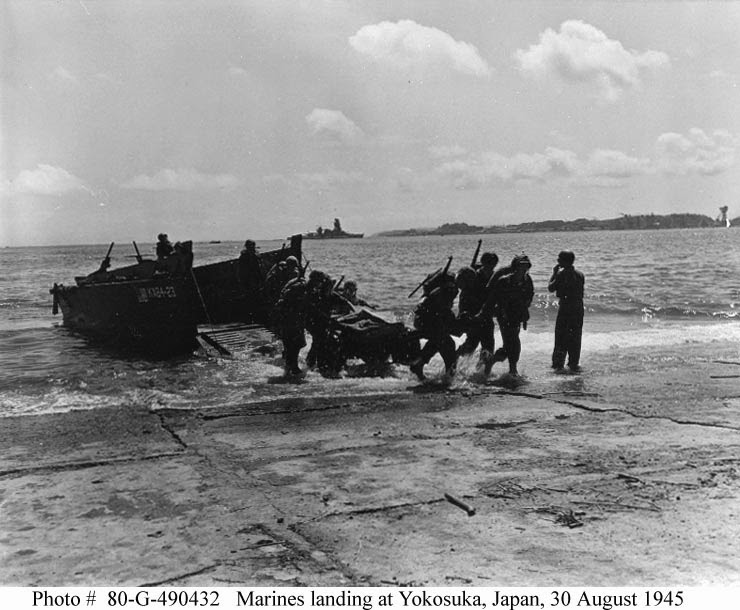 |
| Marines began landing in the last days of August 1945 to begin occupation duties |
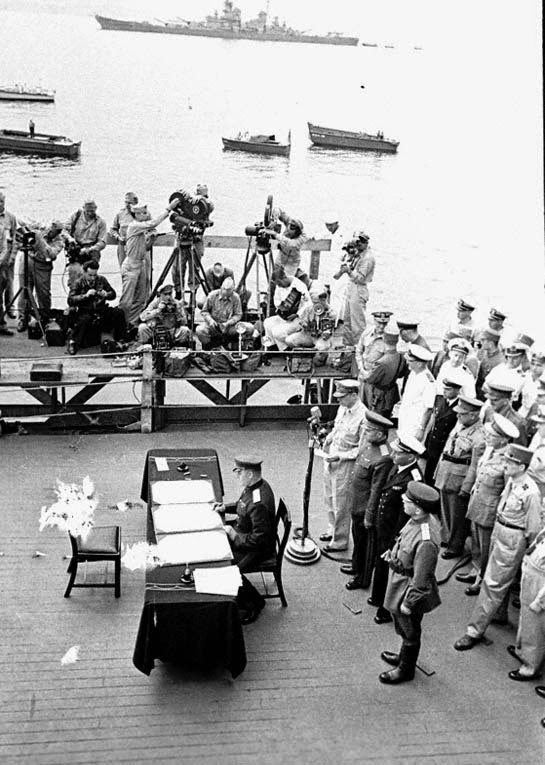 |
| The Soviets sign the surrender documents |
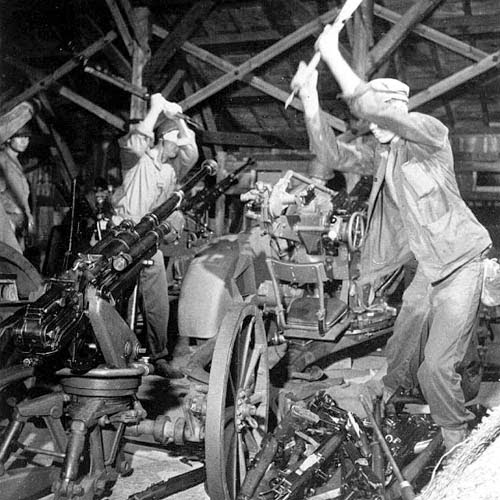 |
| American soldiers destroy Japanese war equipment |
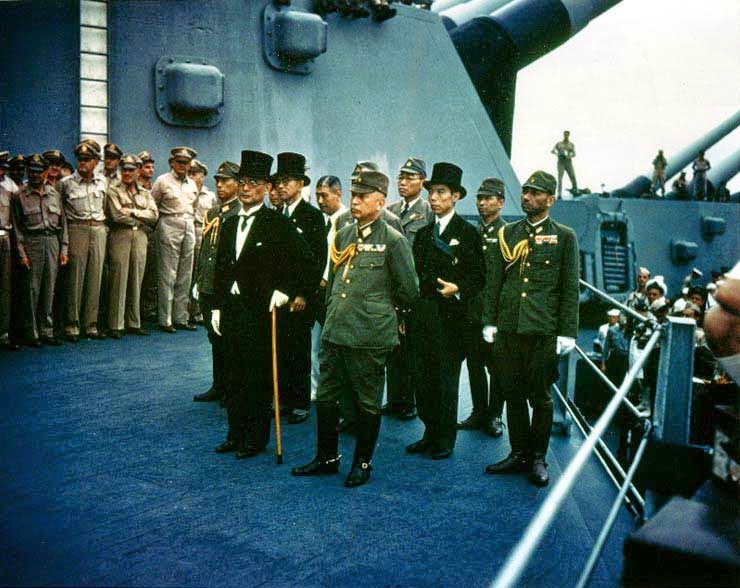 |
| The Japanese surrender delegation arrives |
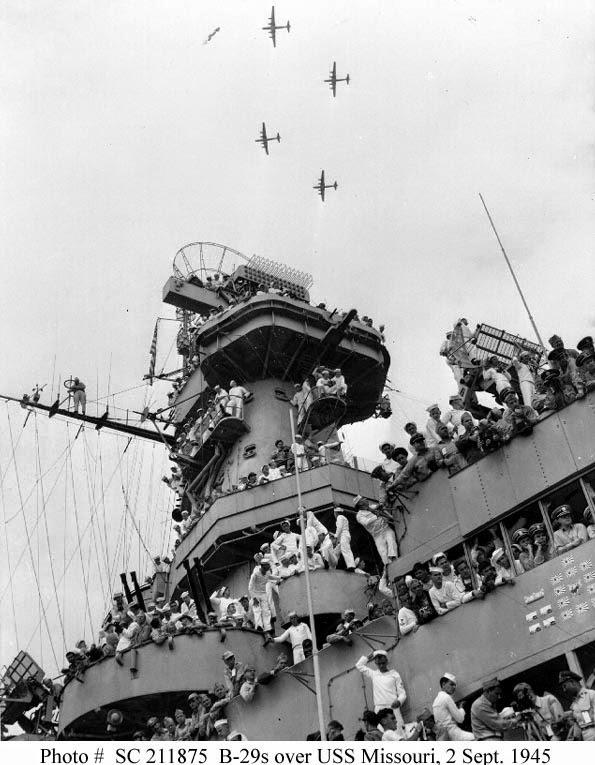 |
| Surrender of Japan, Tokyo Bay, 2 September 1945 - USAAF B-29 bombers fly in formation over USS Missouri (BB-63), during surrender ceremonies. |
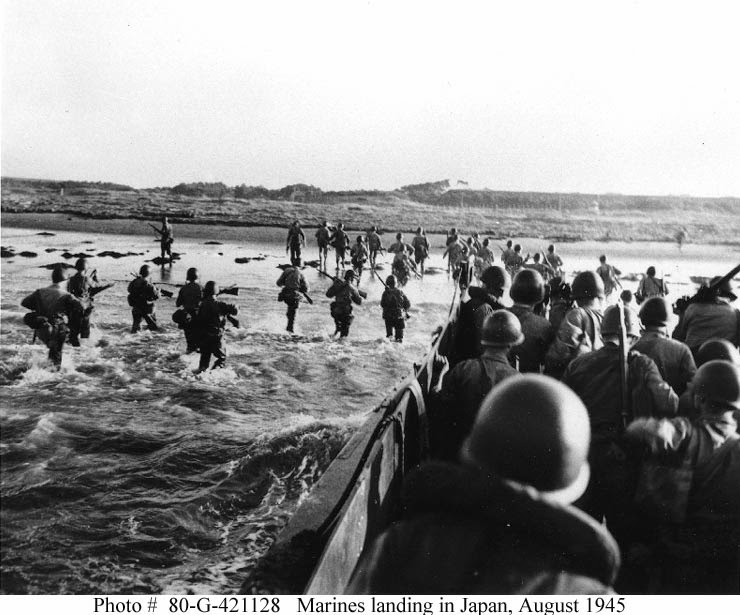 |
| This looks a lot like the Normandy landings, but was quite a bit different |
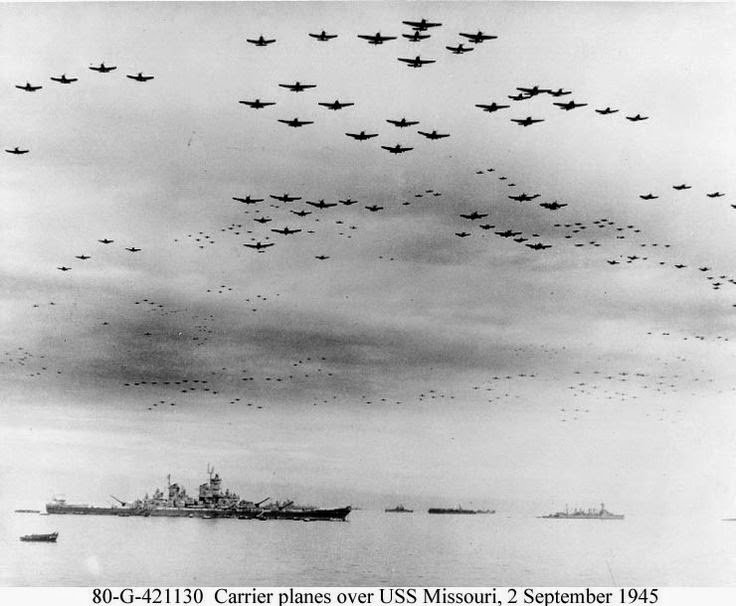 |
| Surrender of Japan, 2 September 1945 - Navy carrier planes fly in formation over the U.S. and British fleets in Tokyo Bay during surrender ceremonies. USS Missouri (BB-63), where the ceremonies took place, is at left. USS Detroit (CL-8) is in the right distance. Aircraft include TBM, F6F, SB2C and F4U types. Actor Tony Curtis was on the bridge of one of those nearby ships, watching the ceremony. Official U.S. Navy Photograph, now in the collections of the National Archives. |
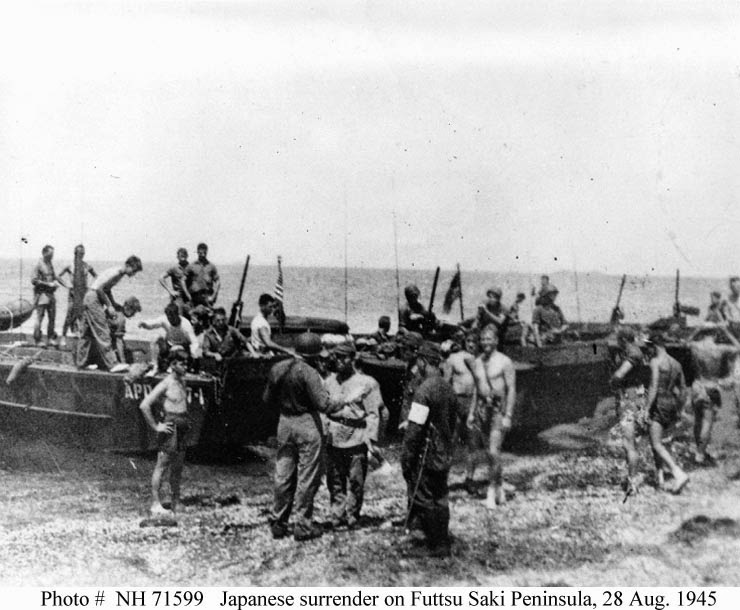 |
| Lt. Commander Porter Clayton accepts a ceremonial sword as a gesture of surrender. |
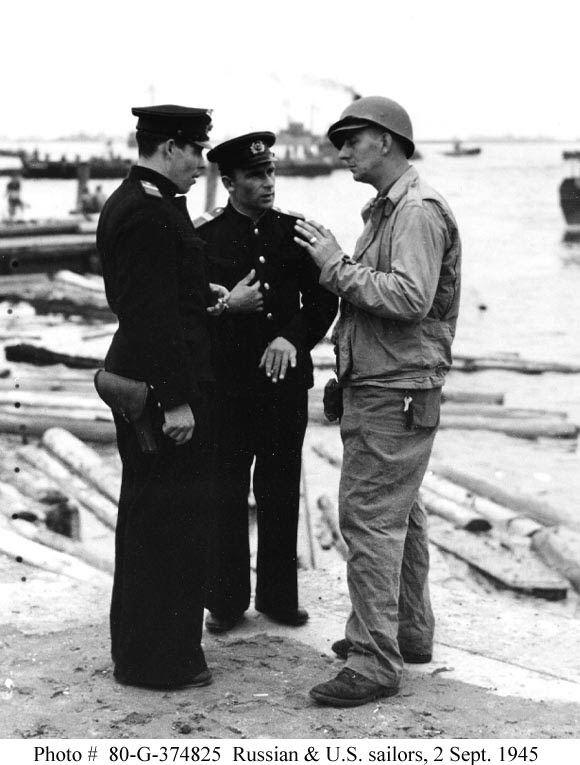 |
| Two Soviet Navy officers talking with a member of the boat group from USS Talladega (APA-208) on the beach at Yokohama, 2 September 1945. Talladega was then landing troops from the U.S. Army's First Cavalry Division for occupation duty in Japan. An omen for the future. |
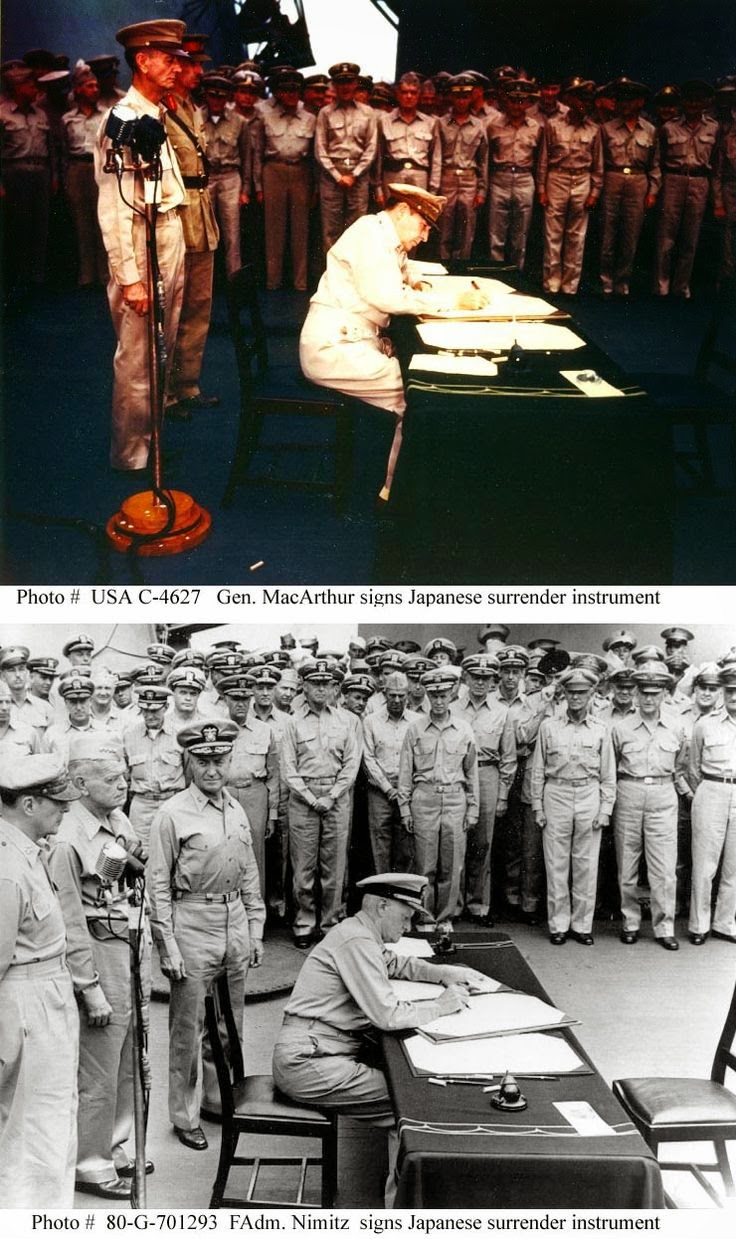 |
| Surrender of Japan, Tokyo Bay, 2 September 1945 - MacArthur signs Instrument of Surrender as Supreme Allied Commander. Behind him are LtGenl Jonathan M. Wainwright, U.S. Army, and LtGenl Sir Arthur E. Percival, British Army, both just released from prison camps. Army Signal Corps Collection in National Archives. Fleet Admiral Chester W. Nimitz, USN, signs as US Representative. Behind him MacArthur, Halsey and Sherman. Official U.S. Navy Photograph, National Archives. |
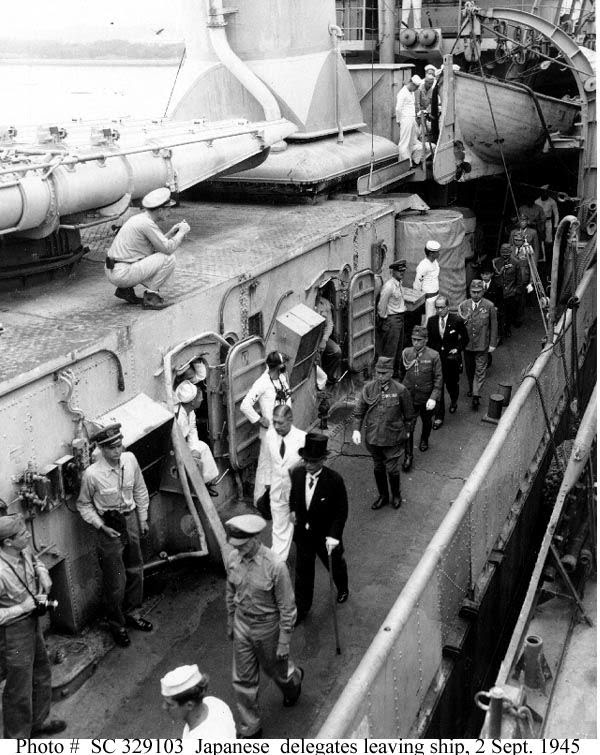 |
| Japanese representatives follow their escort officer along the deck of USS Lansdowne (DD-486), after the surrender ceremonies. Foreign Minister Mamoru Shigemitsu is leading the delegation, followed by General Yoshijiro Umezu. Photograph from the Army Signal Corps Collection in the U.S. National Archives. |
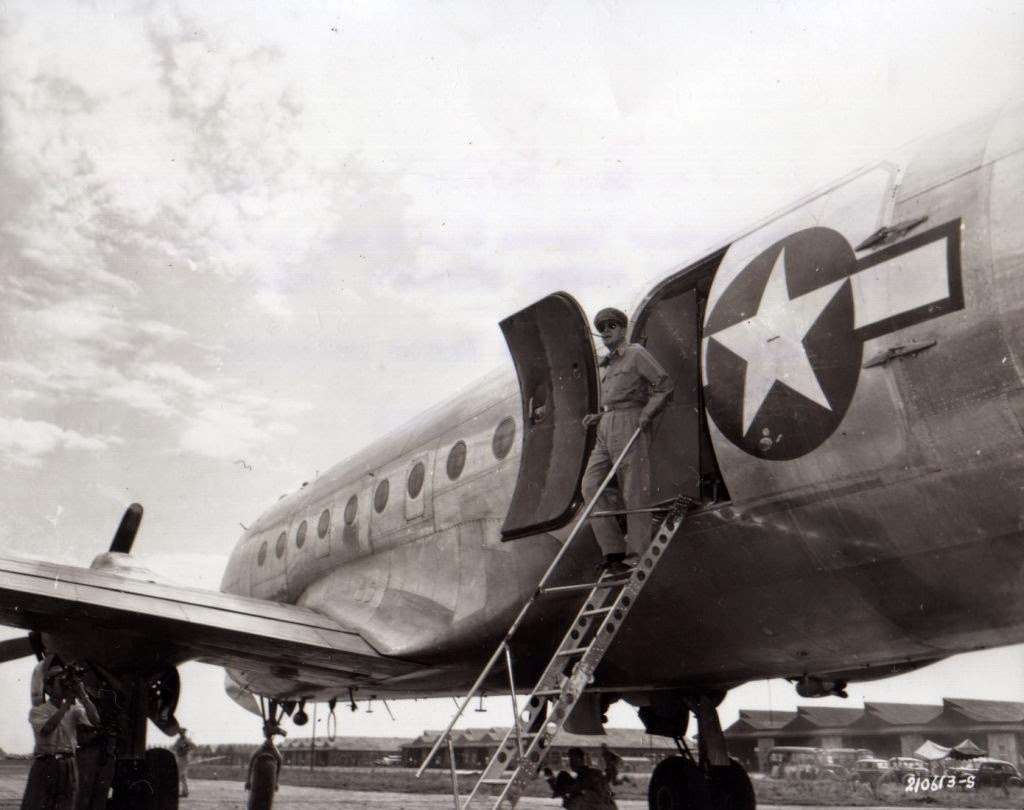 |
| General Macarthur arrives on a C-47 to take over as Overlord of Japan |
Meanwhile, Back in Town....
A Life photographer (apparently) followed this fine fellow around town as he ostentatiously broke about half a dozen set-in-stone occupation rules. One imagines things were not quite this idyllic for the vast majority of occupying soldiers. What the point of this photo shoot was, which probably inflamed many a spouse and sweetheart cooling her heels back home in Kansas or Pennsylvania, is a mystery.
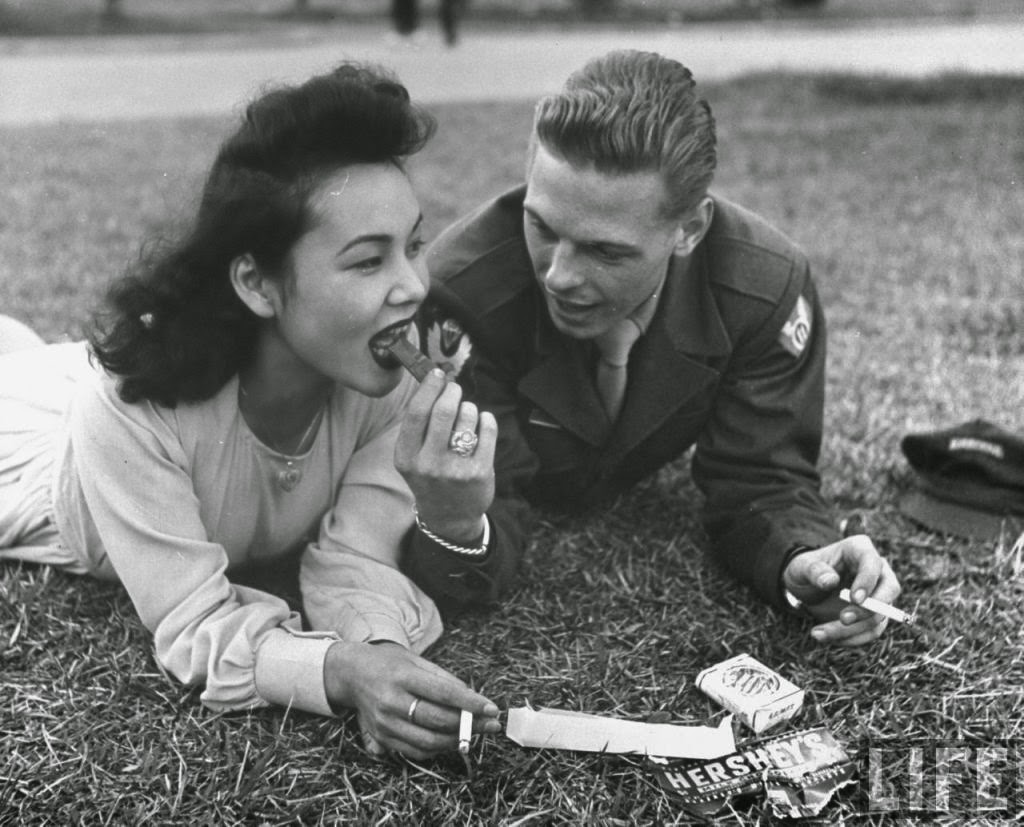 |
| Chocolate and cigarets would get you everywhere |
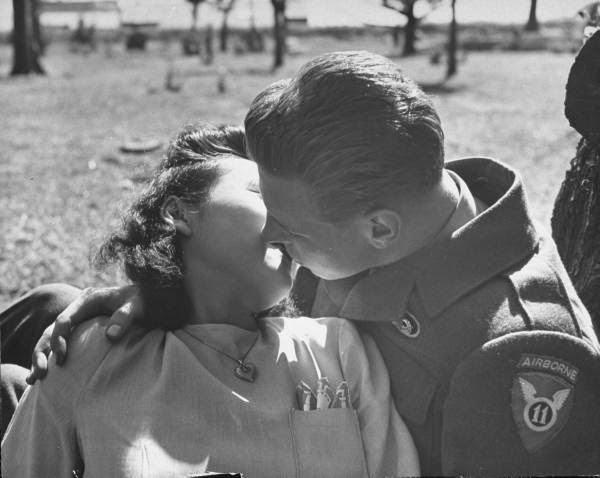 |
| Oh, that's definitely not allowed, that can't have happened. Yes, it's the same couple. |
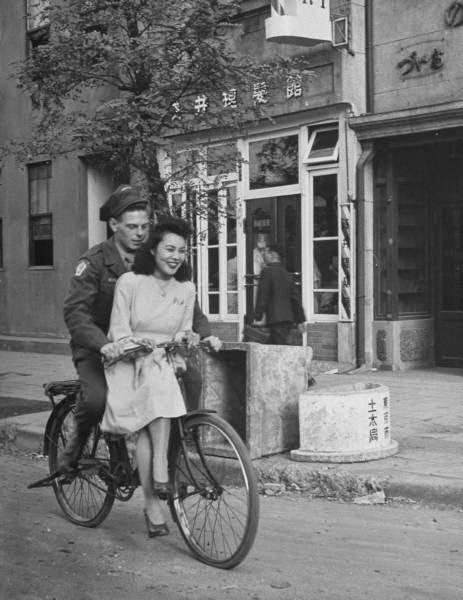 |
| Going for a bike ride, that probably was against regulations somehow |
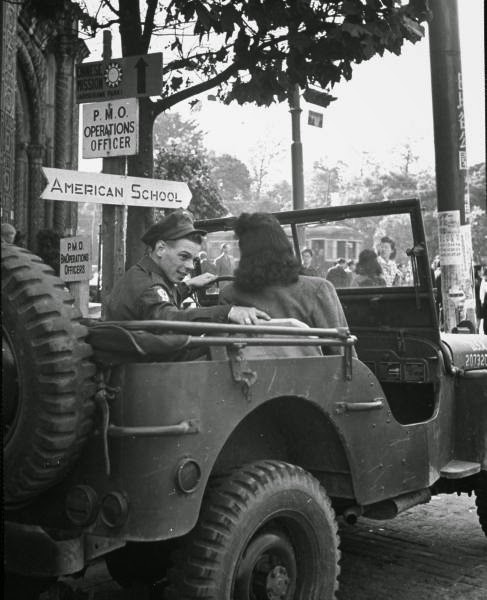 |
| Giving a local a ride in a jeep???? |
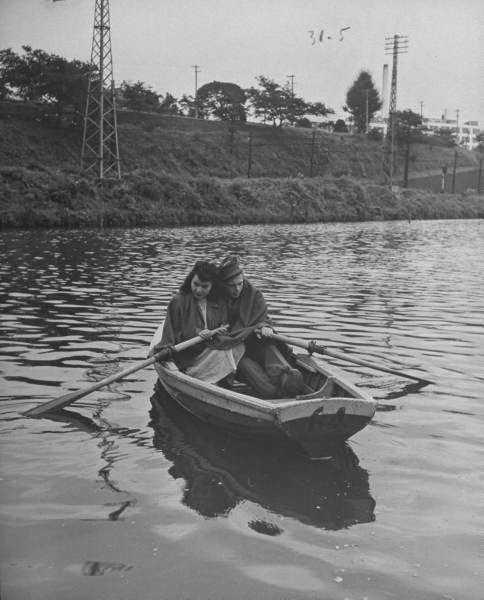 |
| He appears to be making her row, which would be highly amusing. She seems to be giving an evil look toward the camera, though the resolution blots her eyes out |
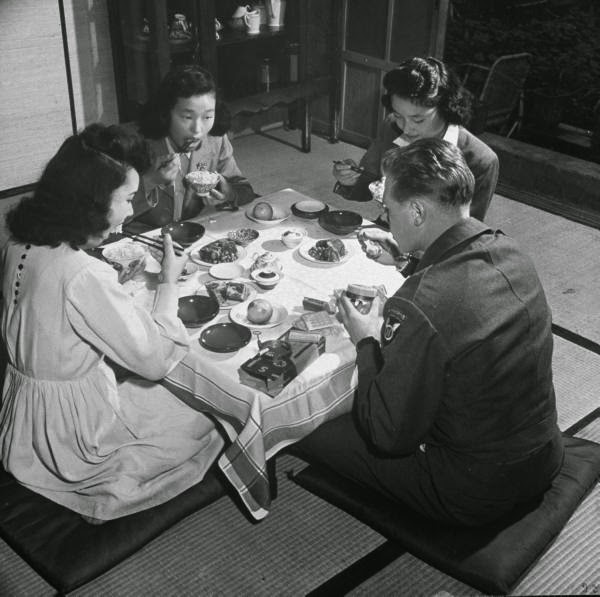 |
| Dinner with her girlfriends, apparently. Notice the one across the table giving him the evil eye, he must be holding his chopsticks wrong or something. He was supposed to bring his own food, that was the rule. |
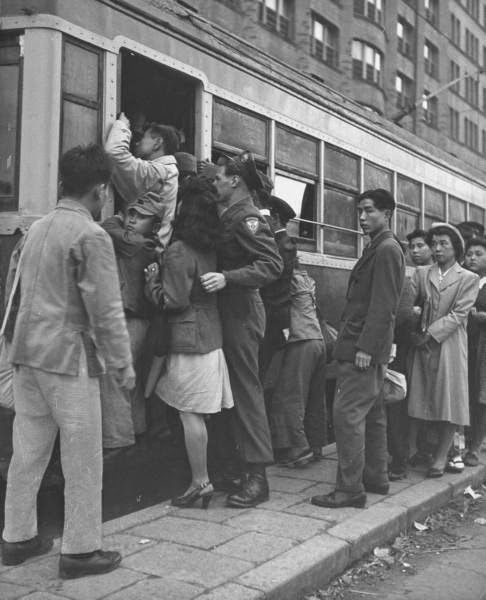 |
| Occupation soldiers were allowed on subways, but not regular train cars |
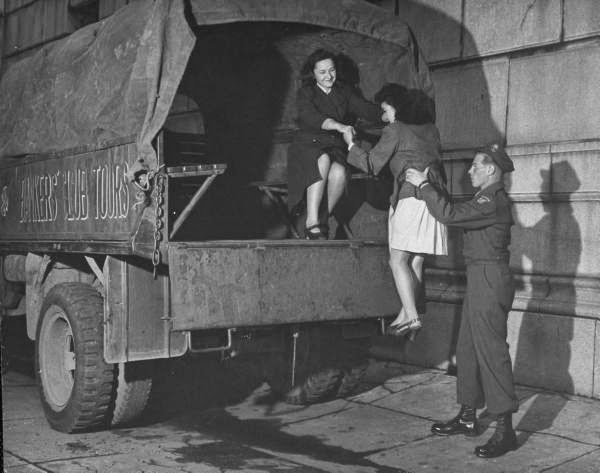 |
| That probably wasn't allowed either.... |
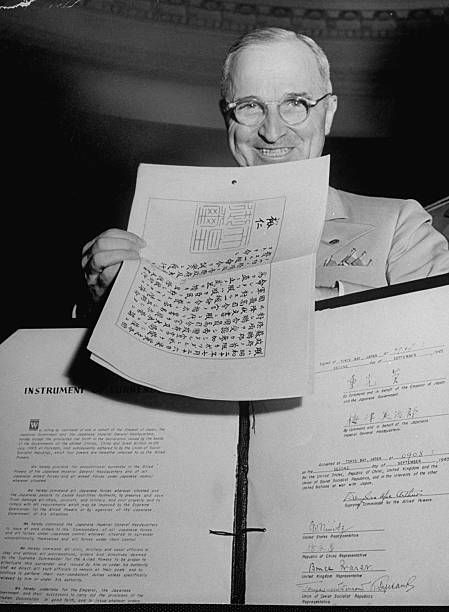 |
| President Truman with the Japanese surrender documents. |
2014

























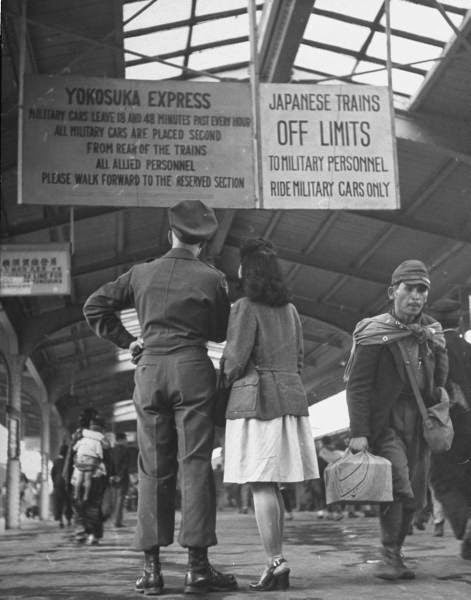
No comments:
Post a Comment